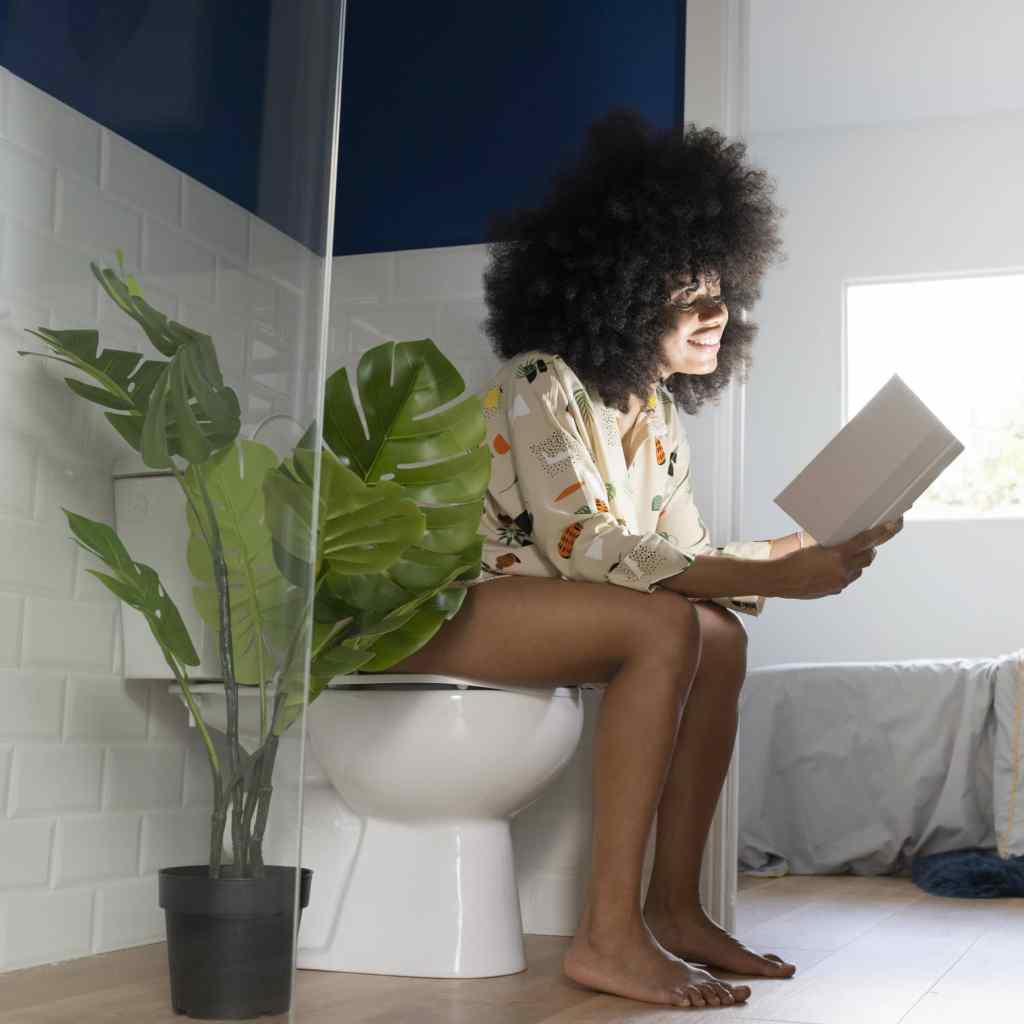Image Source: Getty / Westend61
Welcome to the School of Poopatology! That’s what Susan Wong, RN, BSN, nicknames her new book, “The Power of Pooping,” which came out earlier this month. And, frankly, she’s more than qualified to write what amounts to the ultimate guide to number two. Prior to penning the book, Wong amassed a TikTok following of over 600,000, where she uses the handle Butt Talks TV to post about . . . poop: how to “go” more easily, signs that something is amiss in one’s digestive tract, what we’re all doing wrong while sitting on the john. (She has a YouTube channel of the same name; it’s a play on the word “buttocks”.)
Wong is decidedly not new to this sensitive subject matter. She has 40 years of experience as a registered nurse and helped develop UCSF’s colorectal clinic, where coworkers deemed her “The Butt Whisperer” and “The Rear Admiral”, according to Simon and Schuster. She sees her social media channels (which she created with the help of her son) almost as extensions of her work. “I found nursing to be really great, because I was just helping others, relaying what I know, and that’s what I do through social media,” Wong tells POPSUGAR. Now, her book aims to flush out the secrets to maintaining consistent, healthy poops. “The book is a little bit more extensive . . . [We] hone it down and get back into a more realistic conversation,” Wong explains. Over the course of nine chapters, Wong educates readers on their digestive systems, including what the perfect pooping position is, how to keep constipation at bay, and when it’s time to see a doctor.
If you’ve ever wondered whether something you experience while going number two is normal or whether your toilet time experience could simply be better in some way, you’ll likely find the answer in “The Power of Pooping.” Below, we have a small preview of the amazing insights that await you.
What Does Your Poop Color Mean?
Ever stand over the toilet bowl wondering if the colour of your stool is off? “Your poop colour should normally be brown. If yours is a different colour (really, any colour of the rainbow), it could be due to food dyes, medications, or some underlying health problems,” Wong writes in “The Power of Pooping.” On YouTube, in her various videos on stool colours, she elaborates on some of the most common stool shades – brown, pale, yellow, black, green, and red – and what they mean.
- Brown: Your poop is healthy and your digestive tract is working as it should.
- Pale: There are three reasons why your poop might come out pale, Wong explains: Your liver isn’t producing enough bile (a digestive fluid); your pancreas is not producing an appropriate amount of digestive enzymes; or gallstones are blocking bile from entering the digestive tract.
- Yellow: Colon irritation caused by inflammatory bowel diseases, celiac disease, and lactose intolerance can cause discomfort as well as yellow poops, according to Wong. Additionally, neonatal jaundice, issues producing or excreting bile, and eating foods that are yellow in colour (natural and artificial) or high in fat content can also create yellow poop.
- Black: Wong says there are four reasons that your poop is black: consuming iron supplements if you’re not iron deficient, taking medicine for diarrhea or indigestion, eating black-coloured foods (natural and artificial), or digestive bleeding.
- Red: Eating red-coloured foods (natural and artificial) can be to blame here, as anyone who’s ever had a beet salad can attest to. But rectal, anal, and digestive bleeding could also cause your poop to turn red.
- Green: An increase in consuming chlorophyll – through plants or supplements – makes your poop green. So does eating foods that are artificially green in colour.
The bottom line here: If your poop is any colour other than brown, Wong advises that you speak to your medical provider to determine an appropriate course of treatment.
How Often Should You Poop?
Overall, the book says that everyone’s pooping schedule is going to be different based a number of factors, including genetics, diet, and lifestyle. “Ideally, you will feel better if you poop every day. Just like having a morning coffee . . . Some people have slower gut motility, so it could be once every two days, but that should be fine as long as the poop comes out soft and easy,” Nurse Wong writes on page 50. Signs that it’s time to see a doctor? Having bowel movements less than twice a week, or having hard or painful BMs for weeks at a time.
Constipation Relief
Constipation is a common enough problem that chapter three of “The Power of Pooping” is entirely dedicated to relieving it. The book notes that The National Institute of Diabetes and Digestive and Kidney Diseases lists four main symptoms of constipation:
- Fewer than three bowel movements per week
- Stools that are hard, dry, or lumpy
- Stools that are difficult to pass
- A feeling that not all stool has passed
Wong adds bloating, abdominal pain, and feeling like you need help to “go” to that list.
Again, there’s a whole chapter that deals with relieving constipation. But one useful tip Wong recommends is abdominal massage. There are tons of examples of different stimulating massage techniques on YouTube. There are even yoga poses that are said to help get things moving.
In addition to the natural-treatment route, the book also includes a helpful chart naming over-the-counter and prescription laxatives and supplements. You need to be careful with what type of laxative you choose and how often you use them, since it’s possible to become dependent on them, so this guide is especially handy.
To learn more about Poopatology and Wong’s tips, check out her book “The Power of Pooping” here.

